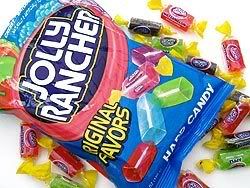US FALLS TO NUMBER 15
The OECD ranked the after-tax income of the average worker in the United States as 15th among its member nations. The richest middle class, if measured in terms of the purchasing power of their income, was Britain.
That ranking would surprise most Americans, who likely consider their nation the most prosperous in the world.
In one fell swoop, OECD statisticians lowered the estimated income of the average American worker by more than 10 percent and raised average incomes of other rich nations by as much as 30 percent, notes Mr. Kirkegaard.
It may well be that the comparative US standard of living is slipping. The price of oil has risen more dramatically in the United States than in other nations because of the dollar's large devaluation.
The reason for the drop is also statistical. In the past, the OECD had been using a proxy for the middle class based on the "average production worker." This concept focused on full-time workers in the relatively declining manufacturing sector, which tends to be unionized in the US and better paid on average. The OECD's new measure is based on the "average worker," which captures all sorts of private-sector jobs including mining, utilities, construction, retail, hotel/restaurants, financial services, real estate, and other areas.
So this new system ought to provide a fairer comparison.
But 15th place?
Not likely, figures David Grubb, an OECD economist in Paris. He points out that the US and Canada included in the statistics that it sent to Paris the wages of nonsupervisory workers, and not those of higher paid supervisory workers and salaried professionals. When that statistical difference is corrected, the rank of the American middle class would move up from 15th. How far is uncertain.
In the newest OECD Economic Outlook, the average annual wage in the total economy of the US was $45,563 for 2005. That's exceeded only by Luxembourg, a wealthy banking duchy, with $50,634. Britain, Ireland, and Australia, are not far behind the US with incomes above $40,000.
The problem is that this is a measure of total wages, not just the middle class, and it includes the richest Americans whose incomes have risen enormously in recent years. Outside of Hungary, the US has the most extreme income inequality in the OECD.
Kirkegaard figures middle- and lower-income Americans are being squeezed by the flood of money going to the superwealthy. Democrats in Congress have the same view, and their tax proposals would shift the tax burden up the income ladder.
After the early 1990s, the incomes of "very well-off Americans increased much faster than those of both the middle class and the poor," figures Gary Burtless, an expert at the Brookings Institution in Washington. For example, top corporate officers got pay increases of 9.5 percent a year in the 1990s, on top of high levels to start with.
This doesn't mean that Middle America incomes have been entirely flat. An analysis by Terry Alexander, an economist at the Federal Reserve Bank of Minneapolis, concludes that a "broad swath of Middle America experienced notable hourly wage gains" since 1975. In other words, children can still assume they have a better living standard, on average, than their parents did.
To reach that conclusion, Mr. Fitzgerald had to disentangle a "confusing web of data." Two data series on individual hourly wage rates showed little, or even negative, growth over the past 30 years. But labor income for the entire national economy was shown to have grown 39 percent in that time span.
To square this apparent contradiction, Fitzgerald applied to the two wage series a broader price index (personal consumption expenditures), which covers the basket of final goods and services that people consume each year. The new result: Average hourly earnings rose 10 percent, rather than declining 4 percent, from 1975 to 2005. Median hourly wages also rose 20 percent rather than 12 percent. Then he factored fringe benefits into the wage calculation, since they have become increasingly expensive and "contribute to workers' well-being."
That combination accounted for 28 percent of the 39 percent growth of total labor income. "This does not contradict the claim that wage inequality increased over this period – it did," writes Fitzgerald in a bank publication. In other words, the rich are still getting proportionately richer.



















